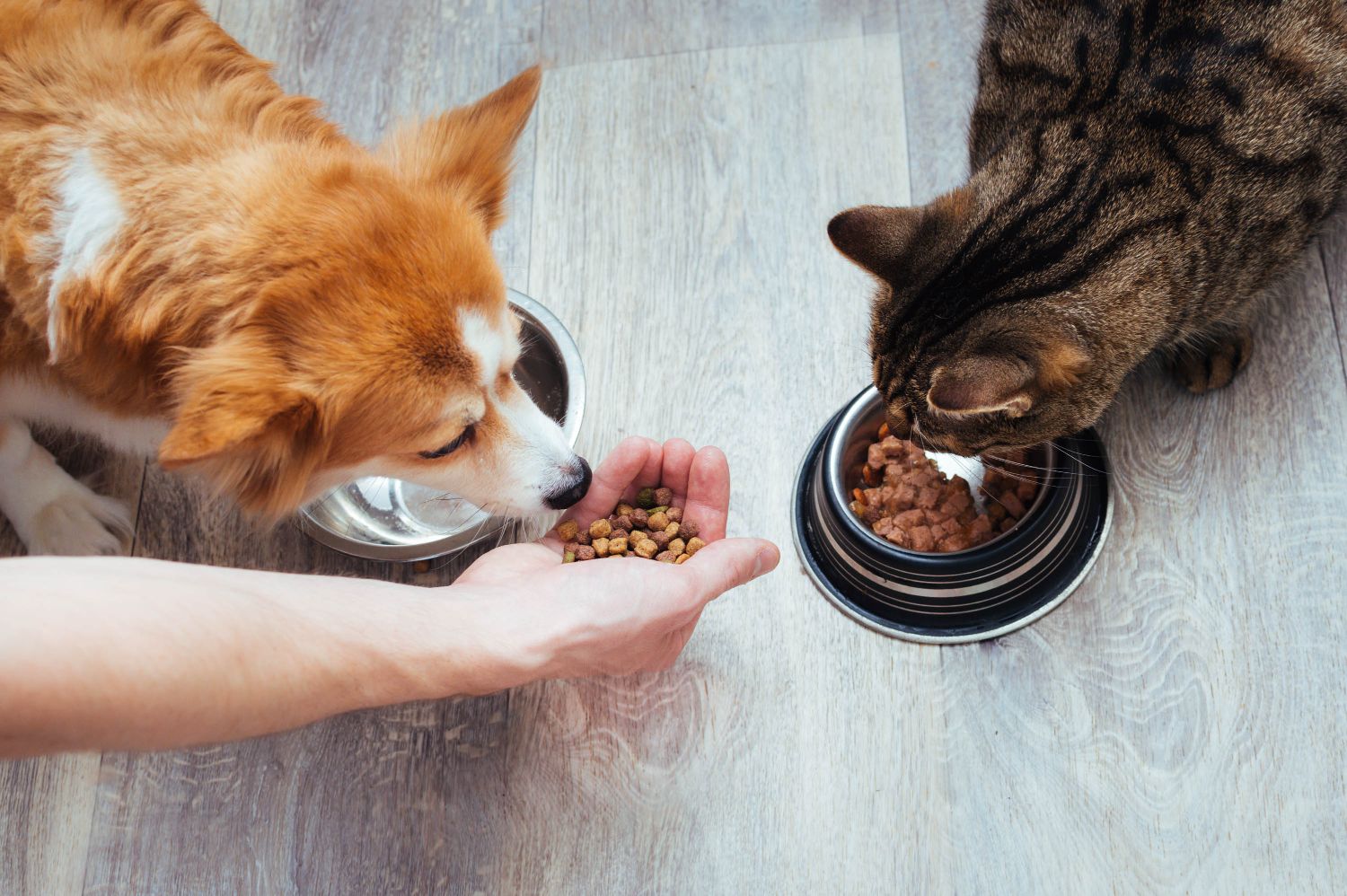How to Choose the Right Type of Food for Your Pet’s Diet

Are you passionate about choosing the right pet food for your furry friend? We are, too. But it’s the Wild West out there when it comes to pet food choices. From bloggers to marketers to Nelly Jones next door, everyone seems to have an opinion on what healthy pet food options are—and aren’t.
You might be wondering if you should feed your dog a diet of raw meat. (Please don’t.) Or what about grain-free pet food? Perhaps you should avoid legumes, peas, and animal byproducts in favor of free-range, ancient-grain, superfood-enhanced, grass-fed, holistic meals.
The team at Bayside Animal Hospital invites you to look past these trendy words and focus on the basics of pet nutrition.
Pet Nutrition 101
When it comes to pet nutrition, look for established professionals to give you advice on what your pet should eat. That could be your veterinarian, the U.S. Food and Drug Administration (FDA), or the Association of American Feed Control Officials (AAFCO), for example. AAFCO is a voluntary organization that has been helping the U.S. Food and Drug Administration (FDA) regulate pet food and nutrition for over 100 years.
The bottom line is that every cat and dog needs six essential nutrients in varying levels:
- Water
- Proteins
- Fats
- Carbohydrates
- Vitamins
- Minerals
It’s important to find pet food choices that meet the Association of American Feed Control Officials (AAFCO) nutrient profiles for dogs and cats. There are plenty of foods on the market that meet these standards, but you’ll have to put in the work to find them. AAFCO does not approve, certify, or otherwise provide labeling for animal food.
But the team at Bayside Animal Hospital can help you find foods that align with AAFCO standards for your pet.
Choosing the Right Pet Food
At Bayside Animal Hospital, we make it easy to order the best quality food directly from Hill’s to Home. Our team recommends Hill’s Prescription Diet, Science Diet, and Healthy Advantage pet food to many of our clients.
Now, let’s address some of the popular diet claims circulating on social media, blogs, and puppy parent circles:
1. Pets do not need to be on a grain-free pet food diet. Grain-free diets may even be harmful to pets because they can cause our fur babies to lose out on key nutrients. Also, ancient grains like quinoa, oat groats, and amaranth are fine for your pet to eat, but modern grains do the job, too.
2. Pets do not need to eat raw meat. As majestic as they are, our dogs are not wolves. Our precious, prowling kitties are not panthers. They are domesticated animals. Raw meat in any form often harbors bacteria that can make you and your pet sick. The American Veterinary Medical Association explicitly recommends against feeding pets raw or undercooked food.
3. Pets can eat legumes, peas, and even animal byproducts. These ingredients can be a healthy part of a pet’s overall diet. Legumes and peas provide nutrients like vitamin A, iron, and magnesium. Animal byproducts—usually organs or entrails—are packed with nutrients. And you won’t find things like ground-up hooves, hair, intestinal contents, or manure in any pet food sold by a reputable source. The FDA regulates pet food, and these contents cannot be included in any pet food sold in stores.
Do you still have questions about pet food choices for your beloved dog or cat? Schedule an appointment at Bayside Animal Hospital. Our veterinarians can recommend healthy pet food options based on your pet’s species, breed, weight, age, health, and unique needs.


